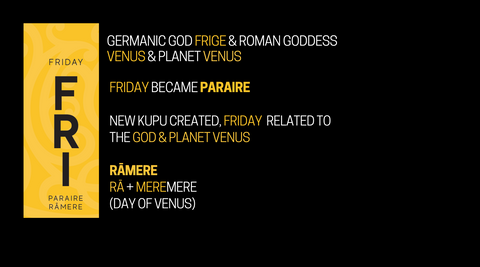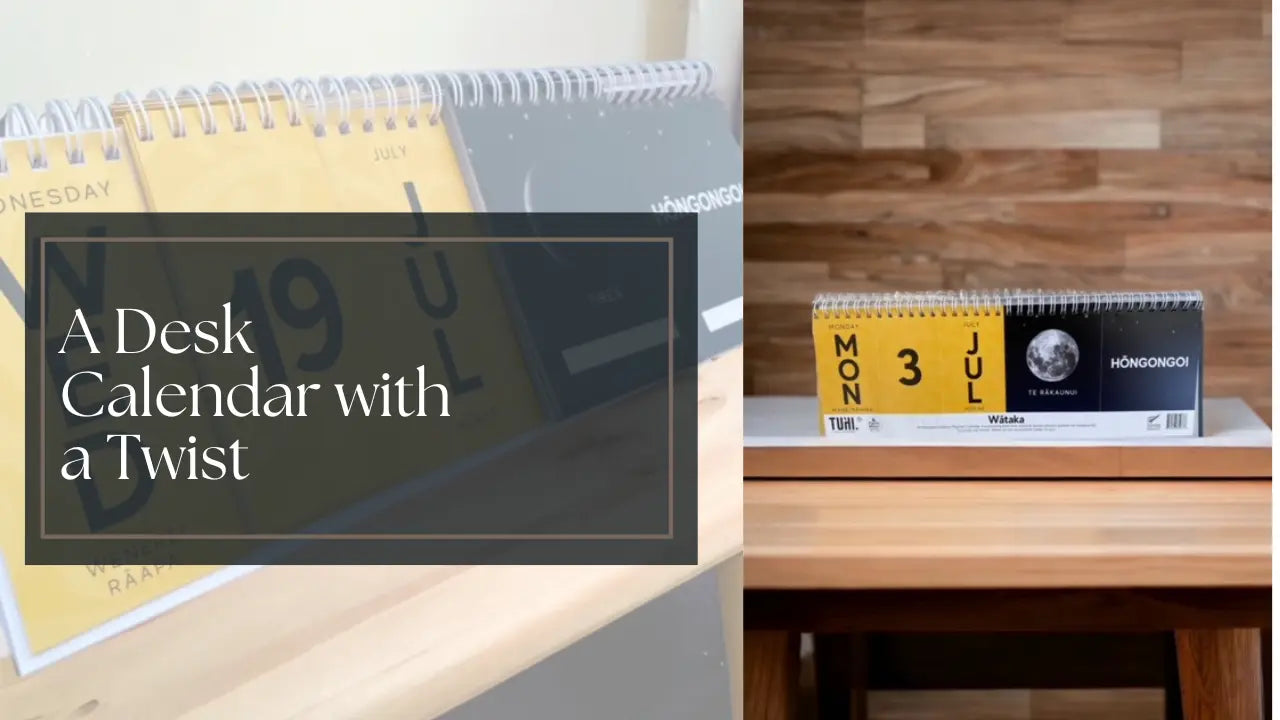Post Matariki
My post Matariki 2023 thoughts - our tamariki are so lucky! They are growing up in a time where so much traditional knowledge and practice is coming to the forefront. Where so much of Te Ao Māori is normalised, they can learn about Matariki at school, on Tik Tok!, and get to enjoy a public holiday. I know - we still have a long way to go, on everything!, BUT, wasn't this year's Matariki pretty amazing?
I think its me and my generation that need the awhi. Truly.
For many of us - there is as much to 'un learn' as there is to 'learn'.
My generation did not know of Matariki, and then when we did - it was 7 stars. We did not know Māori names for the months, and then when we did - we thought they started the 1st of the month, the same as the Gregorian calendar.
Its a journey. Learning, un-learning, reflecting, understanding, learning more - its a bit of a loop, but I'm sure we will all eventually get there in our own time!.
Desk Calendar
This year I created a desk calendar for learning more of the maramataka. I love the old school desk calendars and wanted to make something that would look good, be functional, and most importantly - be a learning resource. Something that could teach some basics and spark an interest to learn more.
I was also mindful of our current economic and environmental situation in Aotearoa, so I wanted to make something sustainable and cost effective, that was undated and could be used forever, handmade in NZ from sustainable forests.
But what does it do?
Essentially, other then looking great on your desk - it provides a daily reminder of our cultural differences in measuring time, but also help answer the number one question I get in our DMs – what lunar phase are we in?

Solar Calendar
The left side of the calendar – the Gregorian Calendar, based on a solar cycle – has yellow flip cards. The days are prominently in English (because that is its origin) and then our Māori translations follow- to reiterate different systems. I have both the loan words, and the words created in the last few decades to translate days of the week (Please see our 2021 blog). Whichever you follow is fine, but just helps to understand the history of why there are 2 versions – see some of the images throughout this blog post to get what I mean.
Lunar Calendar
The right side of the calendar – are 2 flip cards, one for the lunar nights and one for the Māori months of the year. These are part of a Maramataka, but not it's entirety. I have used the phase names from Te Whānau ā Apanui because currently, the excellent book written by Bill Tawhai – Living by the Moon – is the only easily accessible publication of the Maramataka. (Buy online from Huia Publishers for $25.00) However as I know there are hundreds of Maramataka across the motu – there is a blank space if you want to add your own hapu/iwi phase name – but if you are a new learner, then this is a start, and I would highly recommend buying his book.
Stellar Calendar
The months begin from Whiro (New Moon) and are most referenced to the different stars that appear. Ideally, I should have just used those names – then this could be a simple reference to the stellar calendar also. However I have chosen not to - because the month names most commonly used nowadays in everyday settings have a historical reference back to Elsdon Bests writings (that were informed by interviews with many tohunga/ experts), and included many different iwi variations, but also some of the month names that he recorded were not all stars, but reference to things occurring in the environment.
The names are not translations of the Gregorian Calendar months (ie August does not translate to Hōngongoi), but a combination of stars and environmental references at a given time, that is then most commonly occuring at a time - ie Mahuru is beween Sept-October from the New moon, it does not start 1st September).
I know it's a lot to learn/ unlearn - highly recommend watching Professor Rangi Matamua You Tube Series
As a learning resource, I have included the most common names used today – but with a blank space – so again, once you learn and understand more, you can write in what the name would be from your own hapu/iwi - noting as Professor Rangi Matamua states, there was no one universal Maori calendar, it is informed by each iwi and their location and tohu (signs) within the environment.

Unlearn. Then learn.
It will just take time – and I'm right here too trying to do the same!
Tidal Calendar
No- just a trick, I haven’t included anything on here for that, but maybe in the future I could add one more flip card of a 24 hour clock so that you could know high tide/low tide each day. That will be next level!.
Summary
It's a long blog post – but hopefully this provides a little background as to what the desktop calendar is intended to achieve.
Let’s be clear – you will not be a Maramataka expert using this calendar, but – you will hopefully, with the repetition of turning the flip cards daily – become more familiar with the differences between calendar systems and it sparks your interest to learn more. As all of the experts say - the main learning is in the environment, looking up at the marama and all other things around us. You won't learn everything from a book, app, calendar, or video - but hopefully, you can make a start, and the knowledge grows.
I would be happy if by using this resource there were some very simple observations made;
- Gregorian Calendar was introduced to NZ and rest of the world, but Māori already had a complex system in place for measuring time – that was informed by solar (sun) lunar (moon), stellar (stars) and tidal (waters) to create an environmental calendar (Maramataka)
- Each day at 12am a new day starts on the left
- A new phase on the right– will not begin until the Moon rises – and the time varies daily if you want to be a real stickler and only flip your card at that time! But that’s definitely taking the learning to the next level!
- The Gregorian Calendar month will change on the 1st
- The Māori month will not change until the Whiro (New Moon) lunar phase - it will not necessarily be the 1st of the month
- The transliteration words were what was firstly used by Māori when the Gregorian Calendar was introduced. The words we commonly use nowadays for the days of the week were created a few decades ago by the Māori Language Commission and are based on the original meaning of each day of the week. See images throughout this blog - I think using either is fine within your kura/ workplace/ kainga etc, just helpful to know why there are different names.

Hopefully I have created something of interest and value to you- and you enjoy your purchase of the Desk Calendar and it starts a journey of learning & unlearning for you.

